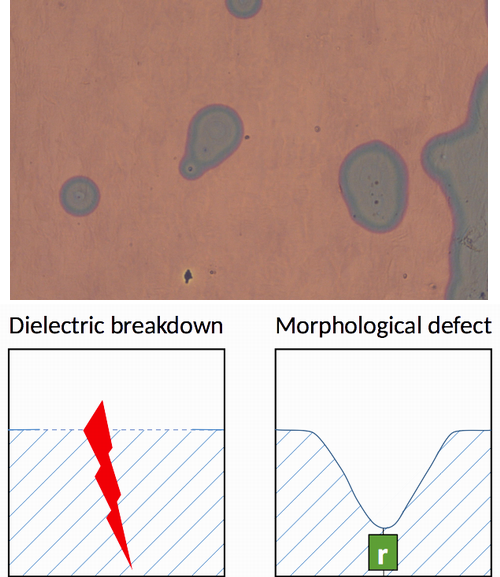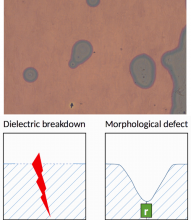Controlling homogeneity of the first lithiation in methylated amorphous silicon
Electrodes made of methylated amorphous silicon (a-Si1-x(CH3)x:H) have better cyclability than those made of pure amorphous silicon (a-Si:H). As a result, they would be better candidates for high energy density lithium-ion batteries. However, it is observed by operando optical microscopy that the first lithiation of a thin layer of methylated amorphous silicon is non-uniform: it starts from isolated nucleation centers then grows radially from these centers. These appear either instantaneously by dielectric breakdown at the start of the lithiation, or more gradually at morphological defects where the thickness of the layer is reduced. In both cases, damage is induced on these nucleation centers by the very high current densities they support at the start of lithiation. It is therefore desirable to avoid this phenomenon, which is linked to the high resistivity of the methylated material. Boron doping makes it possible to significantly reduce this resistivity: we have shown that it enables to obtain a homogeneous lithiation of methylated amorphous silicon. These results have just been published in Electrochimica Acta. [1]

[1] Controlling homogeneity of the first lithiation in methylated amorphous silicon.
Yue Feng, Abdelhak Cheriet, Marianthi Panagopoulou, Damien Aureau, Alistair C.H. Rowe, Catherine Henry-De-Villeneuve, Michel Rosso and François Ozanam, Electrochimica Acta, 2022, 403, pp.139655. DOI:⟨10.1016/j.electacta.2021.139655⟩.


